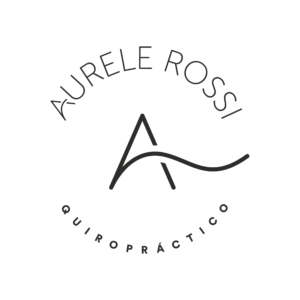
What Happens to Your Body When You Have Excess Cortisol?
What Happens to Your Body When You Have Excess Cortisol? Cortisol, commonly known as the stress hormone, plays a crucial role in
Tel. : 662097657 / 931527281





The lumbar disc disease It is one of the most common conditions affecting the lower spine, causing pain and discomfort in everyday life. But what exactly is it? Why does it occur, and how can you manage its symptoms? In this article, we will explore in depth what lumbar disc disease is, its causes, symptoms, and ways to prevent and alleviate its effects.
Lumbar disc disease is a term used to describe the wear and tear or deterioration of the intervertebral discs found in the lumbar region of the spine. These discs act as shock absorbers between the vertebrae, providing flexibility and absorbing shock during movement. When these discs begin to degenerate, they can lose height, elasticity, and functionality, leading to pain and limited movement.
Lumbar disc disease can be caused by several factors, including:
Symptoms of lumbar disc disease can vary depending on the severity of the condition and the specific level of discs affected. Some of the most common symptoms include:
Lower back pain is the most characteristic symptom. It can be mild or severe, depending on the level of deterioration of the disc.
People with lumbar disc disease may experience stiffness in the back, especially after sitting or lying down for long periods of time.
If the disc deterioration affects nearby nerves, such as the sciatic nerve, the pain may radiate to one or both legs, causing tingling or numbness.
Disc wear can limit your ability to bend, twist, or perform everyday movements.
In more severe cases, pressure on the nerves can cause muscle weakness in the legs or feet.
Diagnosing lumbar disc disease usually begins with a clinical evaluation and a review of symptoms. The doctor may perform imaging tests to confirm the diagnosis and assess the degree of impairment. The most commonly used tools include:
Although it cannot always be prevented, there are healthy habits that can reduce the risk of developing lumbar disc disease or delay its progression:
Sitting and standing with your spine aligned reduces pressure on your lumbar discs. Make sure your workstation is set up ergonomically.
Abdominal and back muscles are essential for maintaining a healthy spine. Exercises such as planks or yoga can help strengthen them.
When lifting heavy objects, use your legs instead of your back to avoid overloading the lumbar discs.
Excess body weight increases pressure on the lumbar region, accelerating disc wear.
A sedentary lifestyle can weaken the muscles that support the spine. Incorporating physical activities such as walking, swimming or cycling can be beneficial.
Chiropractic is an approach that focuses on spinal health and can be a valuable tool for those suffering from lumbar disc disease. Chiropractors use specific techniques to improve spinal alignment, reduce pressure on the discs, and relieve symptoms.
Lumbar disc disease is a common condition, but with proper care and lifestyle changes, it is possible to manage your symptoms and improve your quality of life. From maintaining proper posture to incorporating regular physical activity, every small change counts to protect your back. If you experience persistent lower back pain, consider a chiropractic evaluation to address the root problems and prevent long-term complications.

We encourage you to take care of yourself from now on, without waiting until you feel sick or have various symptoms.
These are some of the answers we hope to answer your questions about chiropractic, for more information visit our FAQ
Yes very sure. The Chiropractic adjustment acts on the nervous system, in order to allow the body's own recovery capacity to function normally.
Millions of people of all ages and with different problems go to the chiropractor, which has negative impacts.
Because? Chiropractic has an excellent safety record, avoiding invasive procedures.
Several studies have demonstrated that chiropractic care is 250 times safer than anti-inflammatories medical treatment.
The goal of chiropractic is to promote better body functionality.
The Central Nervous System regulates every cell of our body.
Chiropractic focuses on correcting the vertebral subluxations and interferences generated on the vertebrae and avoiding correct body functioning.
The vast majority of its users feel better, recover faster and minimize the use of medications and surgeries.
Many people who enjoy chiropractic care feel less stress, have more vitality and live better daily.
No, it isn't. Chiropractic is a sanitary profession complementary to and different from medicine (according to WHO).
It is studied in specialized chiropractic universities. The chiropractic professional receives a minimum training of 5 years that guarantees the quality and safety of the service it offers.
During the chiropractic university career, you don't study surgery or pharmacy but deeper physiology, anatomy, radiology, neurology, and specific manual chiropractic techniques.
As this profession hasn't been approved yet in Spain, you must go to a "true" chiropractic.
Many people use this legacy to practice manipulations of the vertebral column without the correct studies and knowledge.
For this reason, it is essential that, if you are looking for a chiropractor, you check the web of Asociación Española de Quiropráctica, where you can find recognized professionals with studies.

EIXAMPLE
SANT ADRIÀ
RELATED POSTS

What Happens to Your Body When You Have Excess Cortisol? Cortisol, commonly known as the stress hormone, plays a crucial role in
Our patients





We offer you a special offer on your first visit to our chiropractic center.
Includes: